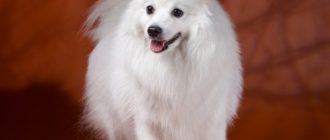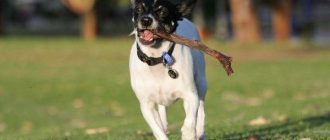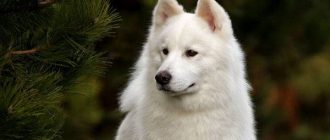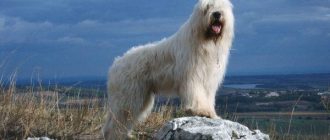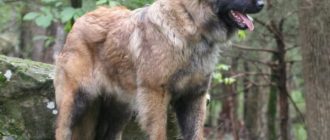The Moscow dragon is not a fully formed breed, rather, according to the definition of M. N. Sotskaya, it is a “pedigree group”. The breeding of these decorative dogs has been dealt with recently, and the standards breeds are still changing, supplemented. But the fact that the Moscow dragon – very interesting dog, with an original and unique appearance view – it is already visible today. A tiny dog resembling an ancient Chinese dragon, gradually gaining the love of Russians and fame outside the homeland.
Content
- 1. History of origin
- 2. Description of the breed Moscow Dragon
- 2.1. Coat and colors
- 3. Character
- 4. Dragon training
- 5. Care and health
- 6. Diseases of the breed
- 7. Feeding
- 8. Keeping a dog
- 9. Photo of the Moscow dragon
- 10. Video about the Moscow dragon
- 11. Where to buy a puppy
Origin history
Contents
The history of the Moscow Dragon breed is only 29 years old. In the late 80s of the last century, the zoo engineer Zoya Kostyna picked up on the street of the puppy from which a cute dog with a peculiar the structure and location of the main hair of the coat. Kari bitch (nicknamed because of brown coat color) knitted with a dog with the same structure of wool cover. Mikron was also found on the street. 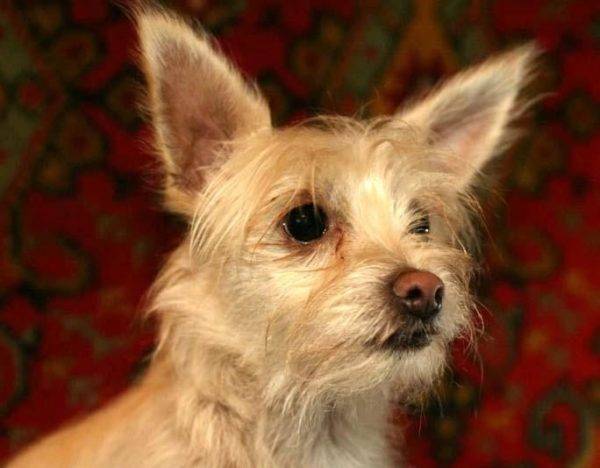
As a result of mating, we got 4 puppies with a characteristic for parents appearance and variety of colors. Specialist interested these aboriginal dogs and she decided to fix the phenotype and create separate breed.
For breeding were used dogs with characteristic features, which, as it turned out, were widespread in Moscow and Moscow region. To fix the phenotype was used not only crossbreeding, but also inbreeding (closely related crossbreeding). The inbreeding bitch Yana had a slightly different the structure of the coat. But upon closer inspection it turned out that “fluffy” betrayed not a shirt, but a long undercoat.
10 years after the start of breeding, the breed was obtained a sufficient number of dogs with a fixed phenotype to formulate and adopt a breed standard. Moscow dragon attributed to the V class of rocks according to the classification of the Russian Cynological The federations in section 6 are primitive breeds. Moscow dragon is not recognized by FCI.
Description of the breed Moscow Dragon
Moscow dragon – small, good and proportionate folded dog. The height of the dragon at the withers is not exceeds 20-30 cm, and weight – 2-4 kg. Since the breed is still in its infancy, then many external data on wide scope are standard:
- The skull is rounded with a slightly pronounced occipital protuberance. The muzzle of the dog is slightly smaller than the cranial box. The transition line from the forehead to the nose has a pronounced bend. The “front” part is filled, has no noticeable depressions. Zygomatic bones are relief, convex. Chin protrusion well noticeable.
- The dog’s lips are medium in size, not moist, and fit snugly teeth closed all over, black.
- Medium-sized teeth, white, full tooth formula. Scissor bite, lower incisors extend beyond top row no more than 0.5 cm.
- The tip of the nose has open nostrils expressed. Mirror color depends on color.
- Medium-sized eyes, oval, wide set apart. The color of the iris depends on the main color and varies from dark to light brown. Eyelids tight adjacent, pigmented in black.
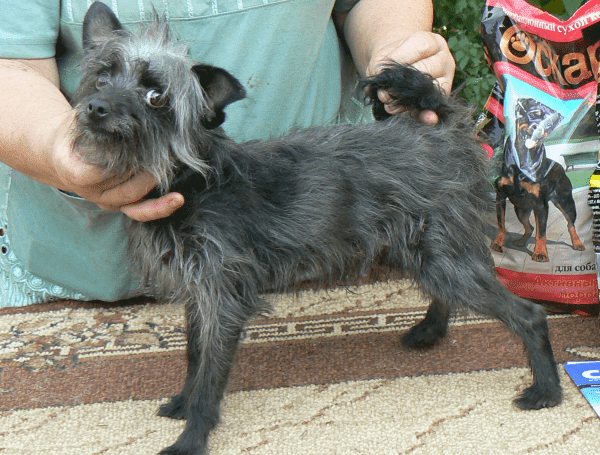
- The ears are thin, long with a narrow base. High set, erect or semi-permanent. Preference is given standing ears.
- The neck is elegant, without suspension, high set, withers almost imperceptible.
- The back is straight, with well-developed muscles. IN the lumbar spine is somewhat convex.
- Chest oval, pronounced, slightly lower does not reach the elbow joints. The breast bone is well defined, false ribs visible.
- The body is compact, dry with developed, but not eye-catching muscles. The abdomen is taut, but does not have a blast. IN the length of the body is greater than in height.
- The tail is high set. Shape varies from rolled up to saber. Dog holds him above his back or throws it on his back.
- The limbs are dry, straight. Rear spaced wider than the front. They have distinct articulation angles. Angles elbow joints directed back. The metacarpus is almost sheer.
- The paw is round, with tightly closed fingers, arched.
Coat and colors
The coat is quite stiff, spine straight or with a break. Dog fits snugly to the surface of the body. Length is different at different body parts – on the sides and stomach are shorter, on the back and head – longer. Long spine shirts form along the spine a kind of crest, and around the neck it forms a sleeve. More long hair and on the tail of a dragon.
On the head, the restroom hair forms a rare beard, mustache and tuft. The undercoat may be short. Then rarely located hard dogs give the dog a tousled look. In a variety with long undercoat general appearance of a shirt and decorating hair persists, but a thick long undercoat gives “fluffiness”.
A disqualifying sign is the absence of latent hair, bald spots on the head, too thick and long beard, mustache and crest. Long thick coat on the limbs is not allowed.
Colors, which in turn is characteristic of primitive breeds, vary widely, but preference is given solid:
- red;
- sable;
- brown
- black
- blue.
Moscow dragons of black-tan, black-eyed, wolf are described color. A change in the standard is expected soon. Spotted permission is expected to be introduced. color.
Character
Moscow dragon – a great companion, which is due the complaisant, peace-loving nature of the dog. Little dragon good “friends” with all the inhabitants of the apartment. Distrust and wariness dragons can show to dogs, but breeders of this breed testify that their pets get along well with representatives large breeds and with decorative dogs.
They have no hunting instinct, so they get along with various pets – cats, rodents, birds and reptiles. 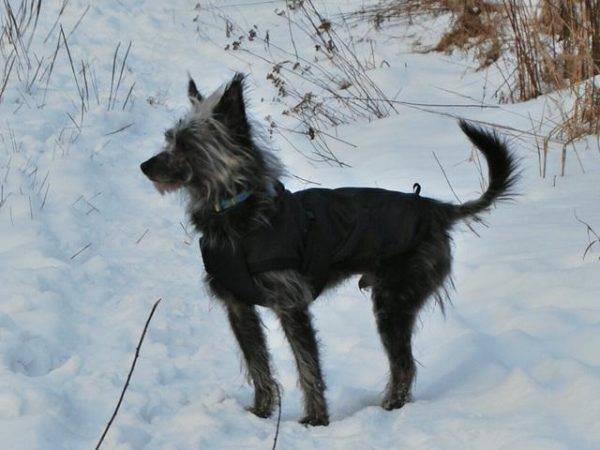
Little dragons have an outgoing, cheerful character. Unlike many representatives of decorative breeds, they are not hysterical, do not bark for no reason, which indicates a stable nervous system.
The little dragons have a bright, distinctive character. They are with love and devotion to the owners, but do not bother, do not require increased attention or care. These little dogs are distinguished by courage, independence, quick wits.
Sometimes dragons are aggressive towards alien dogs, and they do not pay attention to the size of the enemy. Observed some wariness, cautiousness in relation to strangers to people.
Dragon training
Moscow dragon is very trainable, thanks the natural mind and the ability to make decisions. Good physical fortune allow dragons to participate in agility and handling in a class of decorative dogs.
Dogs willingly train and are not even inferior to large dogs in performance of tasks. Some limitation in the development of simulators and overcoming an obstacle course impose only dimensions Moscow dragon.
Whelp “noble” roots manifest in independent behavior and desire to lead, so you need to start training and education as early as possible to these traits nature did not acquire a negative color. Early Training develop obedience in the dog and make her a favorite of all members families.
Training is especially successful if natural skills are used. animal, and training is encouraged in the form of praise, affection or some goodies.
Care and Health
Due to the fact that the breed is derived on the basis of indigenous and domestic dogs, care of a little dragon is minimal. To doggie lived a long life and up to 10 years pleased his owners, it is necessary to do all routine vaccinations, regularly inspect. IN the rest – standard dog care will be quite sufficient.
It is necessary to monitor the cleanliness and condition of the eyes, teeth and ears. Claws cut as they grow. Hair care is also not required. The dragon is bathed as the coat becomes dirty. For bathing use special shampoos that give a rich foam to effectively clean the coat. After bathing, wrap the dog in a towel, soak water and allow the coat to dry naturally by way. 
Little dragons do not need a haircut. Even the instances involved in the show, demonstrate a natural “disheveled”. Although some owners prefer to shorten their hair a little face so that they do not climb into the eyes and mouth.
Like most primitive breeds, the Moscow dragon has good health, unpretentious in maintenance, does not require special care, but all this does not mean that the dog can “abandon” – leave to yourself.
Breed diseases
Due to the “street” hardening and the presence of a large number primitive signs, the Moscow dragon has good health and high adaptability to weather conditions of this geographical area. Due to the recent cultural selection dragons did not have time to acquire pedigree diseases and do not have newly forming mutations, fixed by artificial selection.
Characteristic for primitive breeds is low productivity, which led to a small number of representatives breed. Bitch brings as many puppies as can feed in the wild.
Thanks to the natural selection of Moscow dragons entrenched resistance to external factors and diseases. They have not an allergic reaction is observed, they have high immunity, which allows you to successfully carry the bites of blood-sucking insects and resist the diseases they suffer. In dogs of breed Moscow dragon has developed tolerance to ticks, fleas, helminths.
Feeding
Like all primitive and native dogs, the Moscow dragon does not demanding on food. In addition, he eats a little since the process his digestion is more productive than artificially removed rocks.
When fed naturally, the dragon should attend:
- meat and offal;
- cereals;
- vegetables and greens.
Whelp representatives are not selective in food, they are with the same pleasure they will eat the food that they eat hosts, and dry food. They need clean water, which in a sufficient amount is freely available.
But, despite the unpretentiousness of the dragon, should be given attention to the diet of the pet. So that it develops and grows correctly food must be balanced and contain the necessary amount of useful minerals. 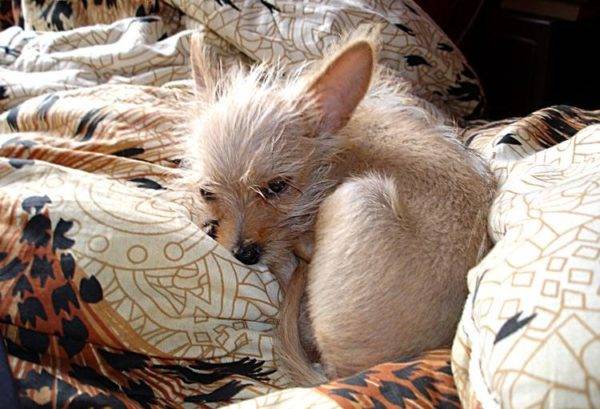
Therefore, with natural feeding, it is necessary to choose appropriate vitamin and mineral complex, replenishing daily intake of vitamins, micro and macro elements. If the owner opted for finished production rations, top dressing with vitamins is not needed, as dry feed is premium and super-premium class contain them in sufficient quantities.
Dog keeping
Moscow dragon took root perfectly in urban environments. The little dragon is not inclined to make noise, to mess out, run around the apartment, therefore it is very convenient and easy to keep for different owners age and even with a complete lack of experience.
He can live in a small apartment, tolerates well loneliness, even busy people can afford it. The little dragon tolerates heat and cold well, so you can use it go for a walk in any weather and temperature.
At home, it’s enough to arrange the dog’s own couch, although he does not require this. Dogs guard their territory and so as not to there were conflicts with other pets, it is better to highlight the dragon own berth.
On dragon walks, it is necessary to withdraw 2-3 times a day. He sets the duration of the walk himself. Sometimes he needs prolonged stay in the fresh air, and sometimes it is limited time necessary only for the departure of natural needs.
Walking with this baby is better by holding him on a leash so that he does not conflicted with large dogs. Despite the average level activity, you should pay attention not only to walks, but also classes, training. Moscow dragon will achieve victories, with pleasure to participate in competitions, so do not deprive its this kind of activity.
Photo of the Moscow dragon 

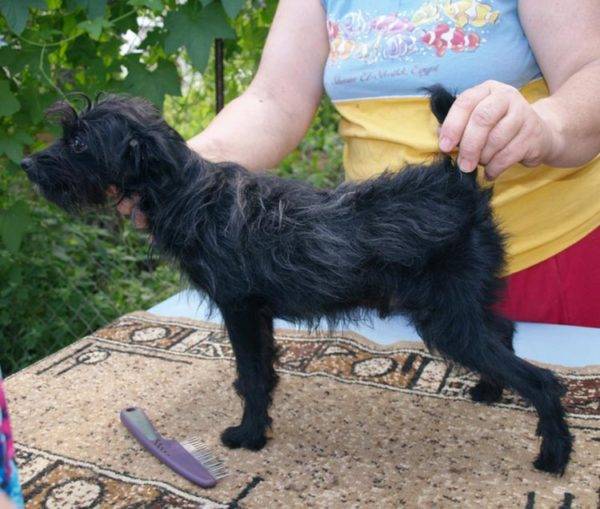
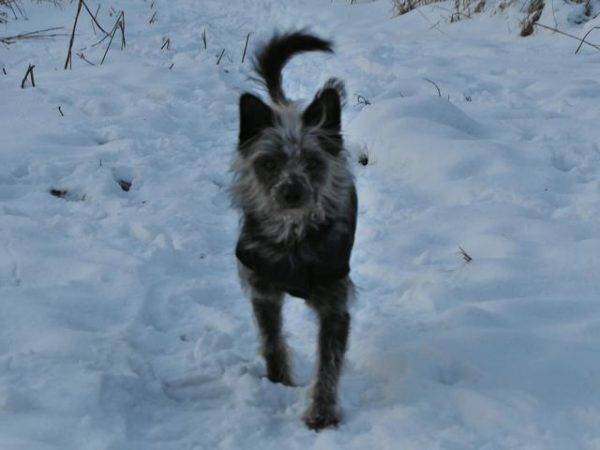

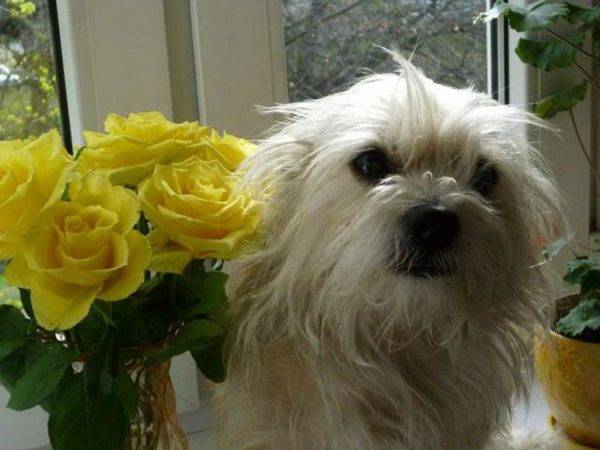
Video about the Moscow dragon
Where to buy a puppy
Moscow breeders noted an increase in interest in this rare breed on the eve of the year of the Dragon. Small dogs with exotic looks gaining popularity, but so far demand exceeds supply. Despite the fact that AVITO there are ads for sale puppies at a price of 3000-3500 rubles, it is better to buy a puppy in nursery, where specialists are engaged in their breeding.
Today, only about 100 dogs have a stable phenotype, therefore, it is important to seriously choose a nursery in order to purchase a real thoroughbred pet.
Moscow dragons are breeding in the nursery:
- “Brownie” (Moscow), http://mosdragon.narod.ru/;
- “Mirkwood” (Moscow), http://liholesie.narod.ru/;
Moscow dragon – kind, balanced, calm and unpretentious pet at home, which will be an ideal option for those who love dogs very much, but cannot give too much them time.

